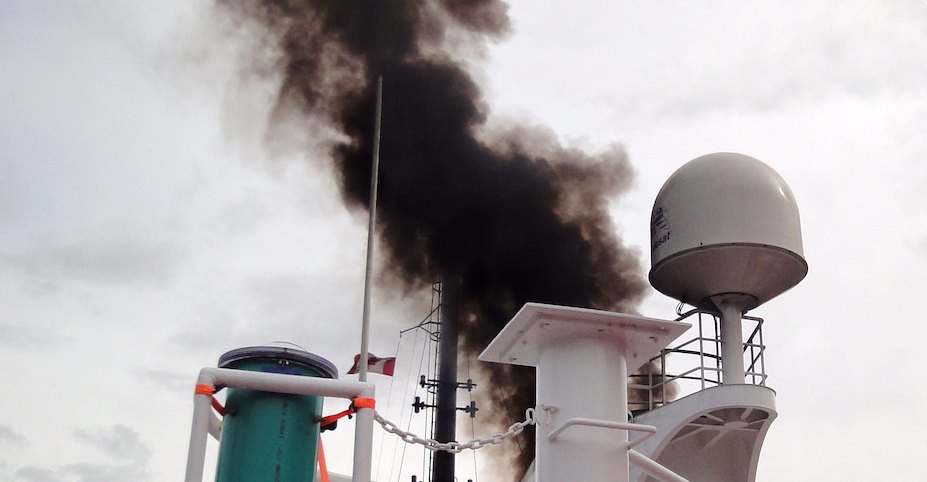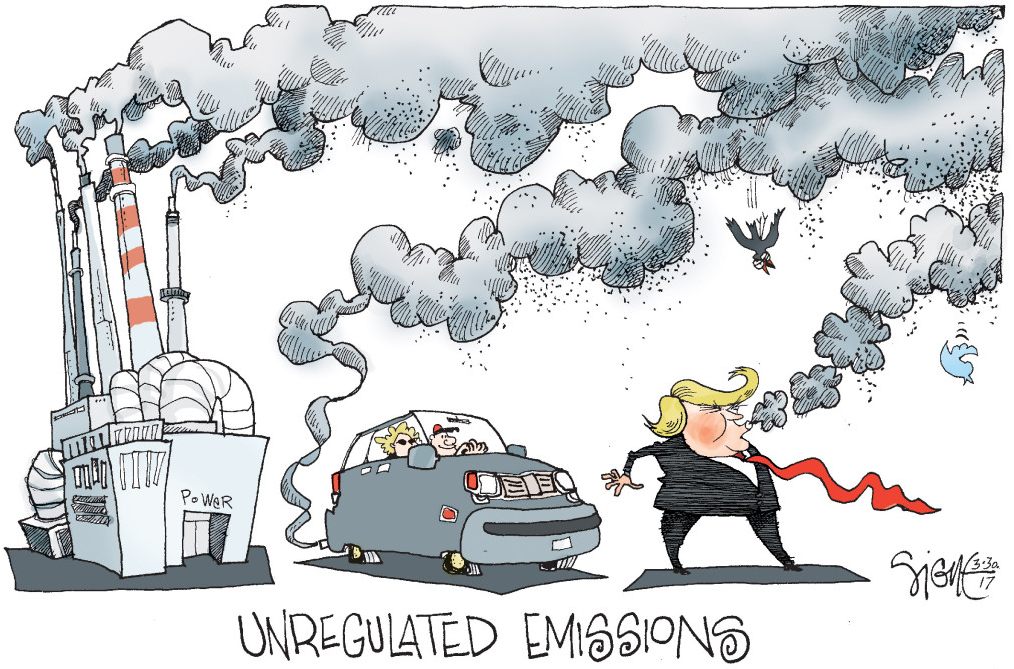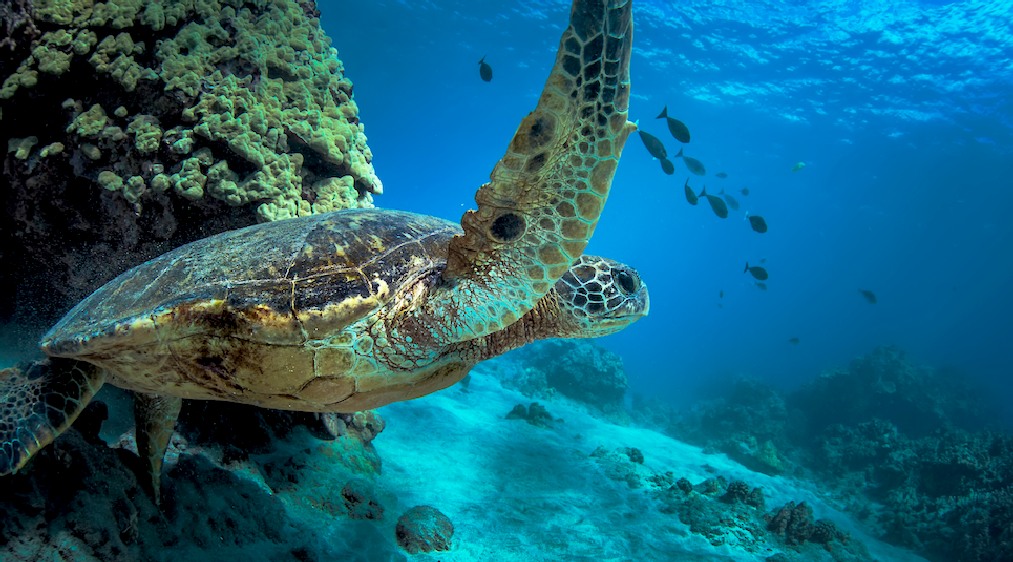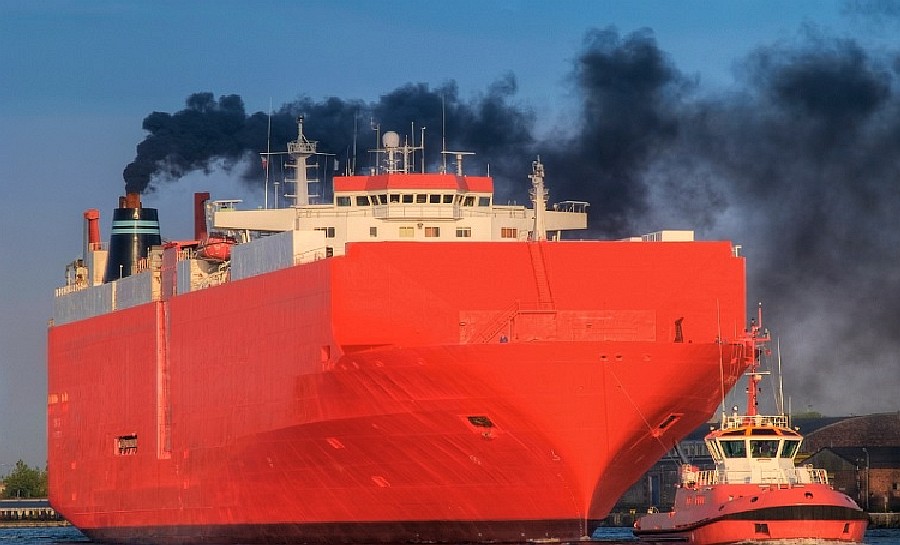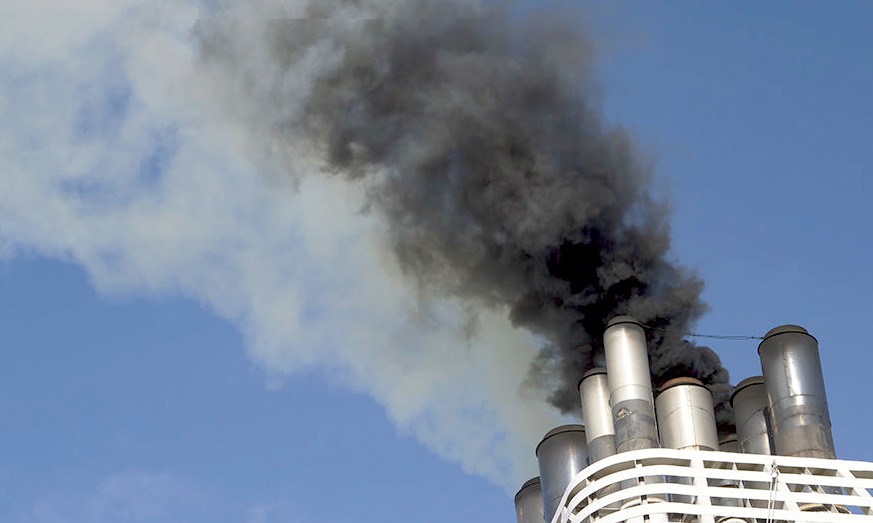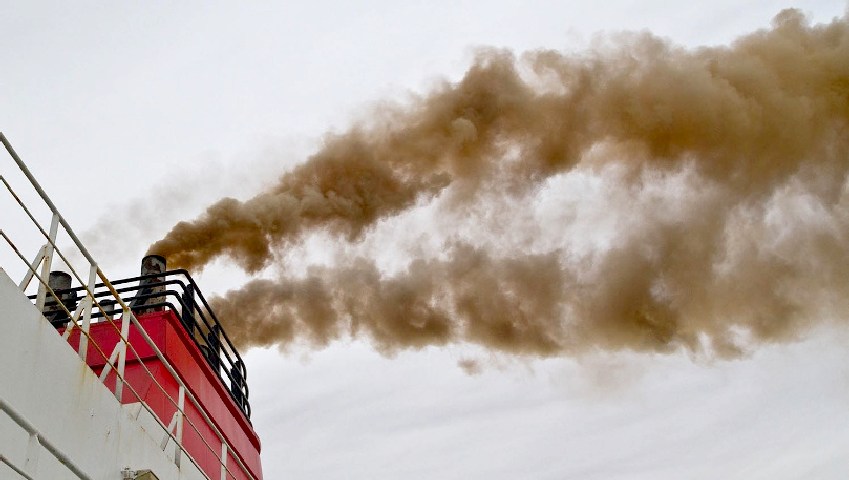|
OCEAN ACIDIFICATION
Please use our A-Z INDEX to navigate this site or return HOME
|
The Cleaner Ocean Foundation works to help protect the "seven seas" from the effects of anthropogenic atmospheric pollution like this ship that is belching diesel fumes like there is no tomorrow. We'd like to preserve tomorrow for our children.
Acidification is such a serious problem that the United Nations has a Climate Convention to seek to combat the problem. They hold annual conferences involving something like 197 parties, known as Conferences Of the Parties (COPs). They UN also has a Biodiversity Conference, the latest being COP15 in December 2022.
Why and how does ocean acidification happen and why is this important for humans? Acidification goes hand in hand with Desertification. Both are caused by political vandals, more concerned with economics than protecting lives and livelihoods.
About 30% of the carbon dioxide emitted in the atmosphere is absorbed by the global ocean. Once CO2 meets H2O, we get: 1. carbonic acid H2CO3 and 2. free hydrogen ions H+.
These free hydrogen ions H+ will bond with carbonate ions CO3(2-), which is bad, because carbonate ions are essential for the creation of calcium carbonate CaCO3.
Calcium carbonate is an essential ingredient for calcium based structures such as shells and coral.
One cause of acid oceans is sulfurous oxides from ships that burn heavy fuel oil called bunker fuel. Thus, zero emission vessels like the Elizabeth Swann would stop these nasty oxides from settling into the oceans.
Some countries have policies that allow, even encourage, dirty ships and trucks to operate. President Trump withdrew the US from the Paris Agreement. We anticipate that President Joe Biden and his new cabinet, potentially including John Kerry, will get climate talks back on the rails.
ENERGY BUDGET
If ocean acidification continues, many species will suffer drastic consequences (some of them will inevitably become extinct), including phytoplanktons.
Their balance will be greatly disturbed, many phytoplankton species will migrate and maybe adapt to the new conditions, others will probably disappear. This will in turn reduce global oxygen levels and that is bad for every life form that breathes.
Marine life will suffer as acid oceans eat into their shells and alter the chemistry of the water
SIX WAYS WARMING IS AFFECTION OUR OCEANS :-
1.
Coral bleaching
2.
Fish migration
3. Fish shrinkage
A new study (21-8-17) by researchers at the University of British Columbia explains that fish are cold blooded and cannot regulate their own body temperatures. Thus, when their waters get warmer, their metabolism accelerates and more oxygen is needed to sustain body functions. For this reason fish could shrink in size by 20 to 30 per cent if ocean temperatures rise by just 2°C (3.6°F) - about what is expected to occur around the world by the mid-21st century.
4.
Drowning wetlands
5.
Ocean acidification
6.
A disastrous positive feedback loop
Ships that use bunker fuels, nearly all cargo and cruise liners in 2020, are killing marine life. You can help us to demonstrate clean shipping is possible, by becoming a partner to the Elizabeth Swann project.
Please use our A-Z INDEX to navigate this site
|
|
This website is Copyright © 2023 Jameson Hunter Ltd
|
